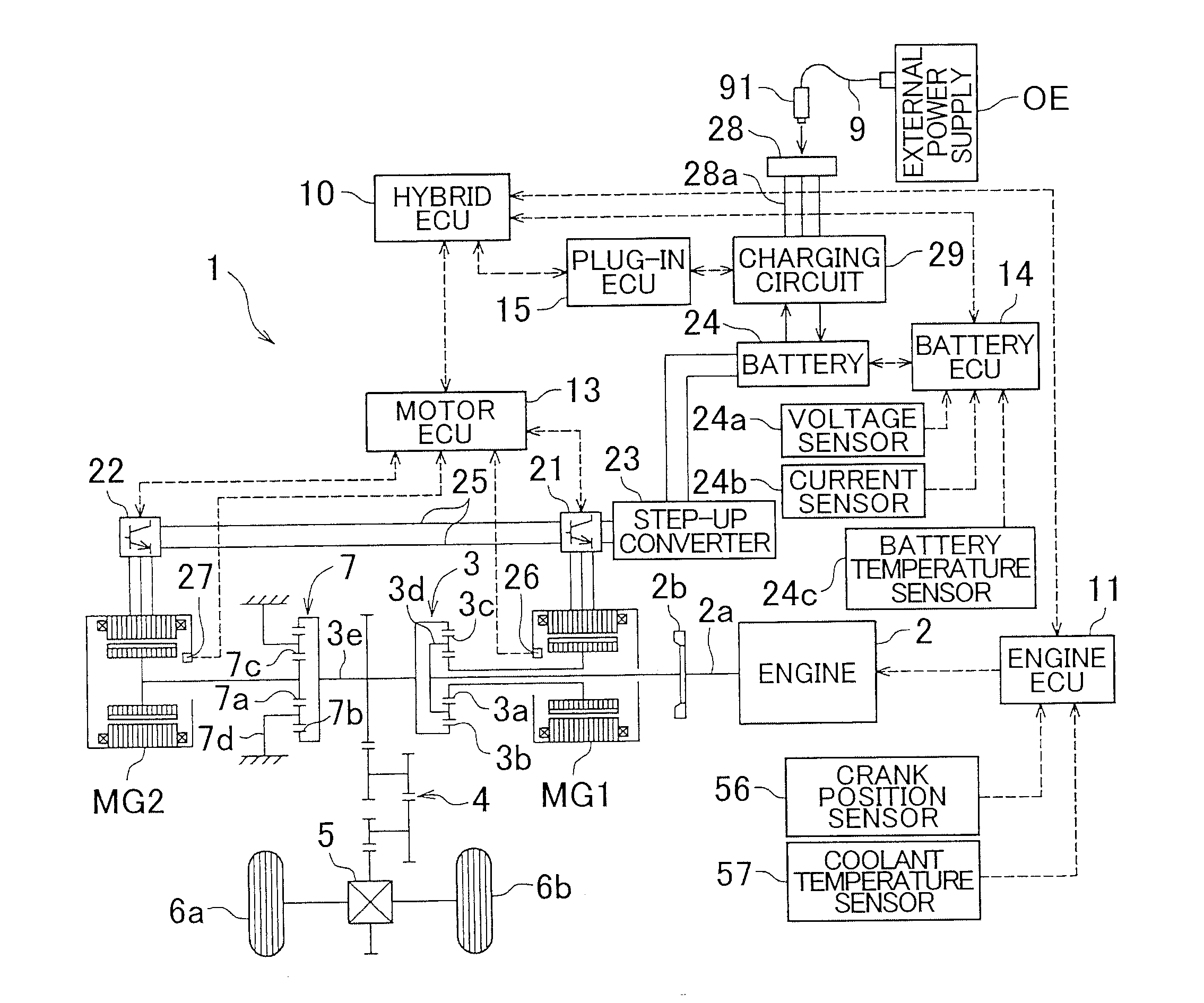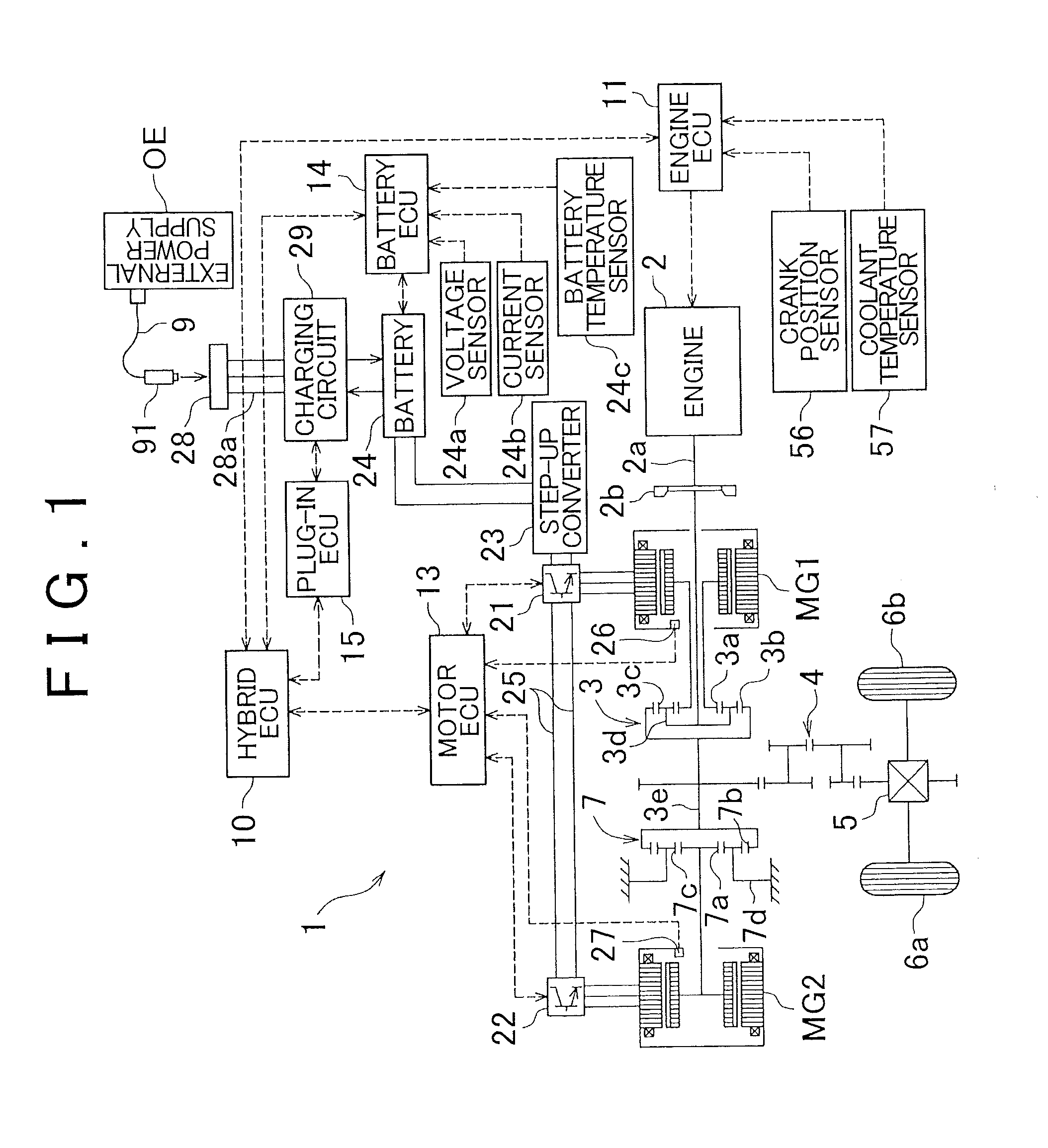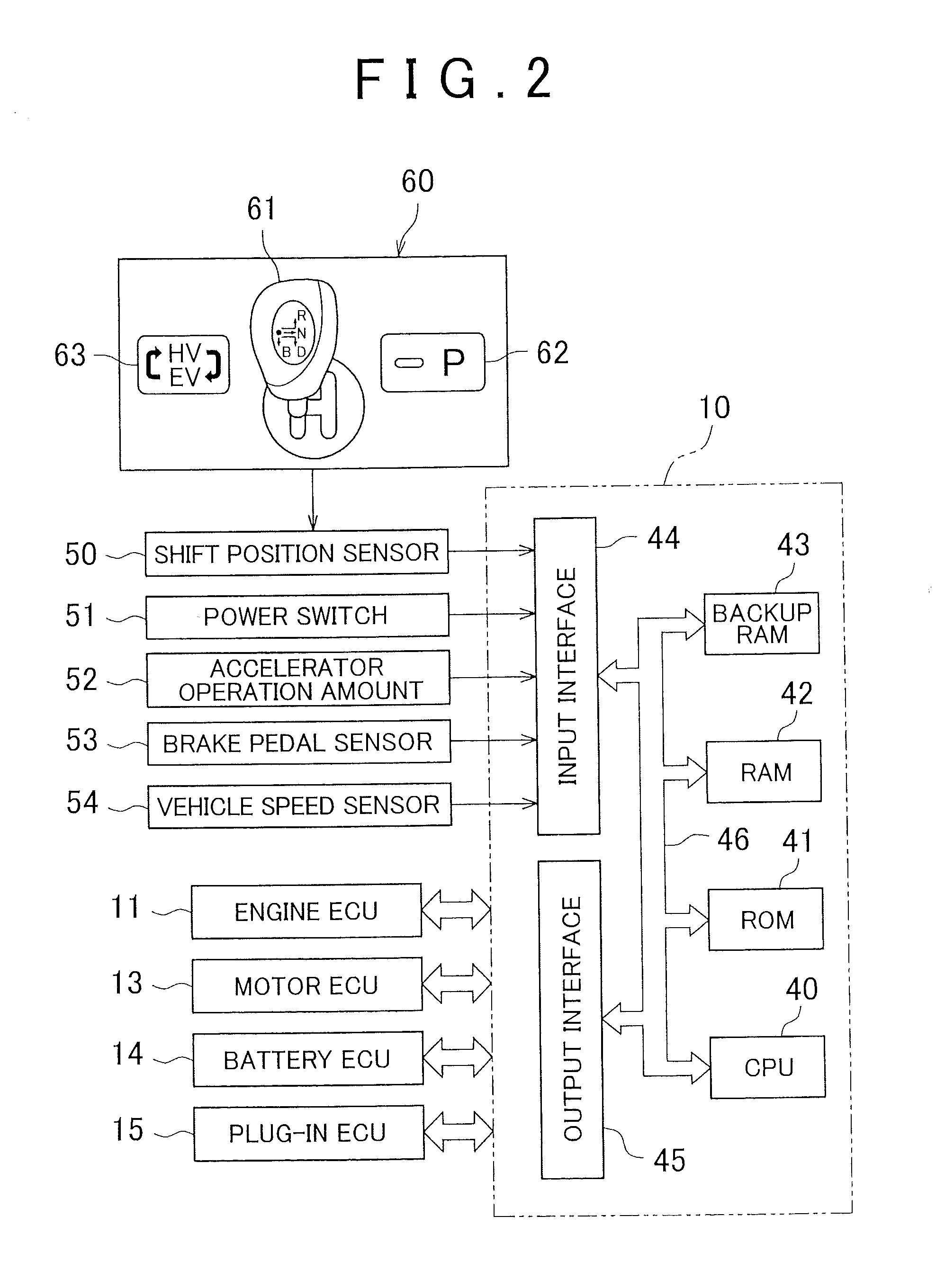Plug-in hybrid vehicle
a plug-in hybrid and hybrid technology, applied in the field of plug-in hybrid vehicles, can solve the problems of inability to calculate the electric power consumption per unit travel distance is relatively large, and the calculation accuracy may not be sufficient, so as to improve the accuracy of calculating the electric power consumption ra
- Summary
- Abstract
- Description
- Claims
- Application Information
AI Technical Summary
Benefits of technology
Problems solved by technology
Method used
Image
Examples
second embodiment
[0145]Next, a second embodiment will be described. In the present embodiment, when the rate of the driving time of the engine 2 in the CD mode is higher than or equal to a predetermined value, even though information about an electric power consumption and a travel distance is not acquired during the driving time of the engine 2, it is determined that an obtained trip electric power consumption rate may have an error, and the trip electric power consumption rate learning operation in that trip is invalidated.
first embodiment
[0146]In the present embodiment, the count value of the learning invalidation counter is replaced with the rate of the driving time of the engine 2 in a trip. That is, the rate of the driving time of the engine 2 (the driving time of the engine 2 in response to the power requirement-based engine start request, the driving time of the engine 2 in response to the torque requirement-based engine start request and the driving time of the engine 2 in response to the Win-excess prevention requirement-based engine start request) with respect to the total time of the trip at the end of the trip reaches a predetermined rate, an accumulated value of the electric power consumption and an accumulated value of the travel distance, calculated in that trip, are invalidated.
[0147]FIG. 9 is a timing chart that shows variations in the engine start flags, a learning invalidation index (the rate of the driving time of the engine 2 as the vehicle travels on an uphill or a downhill in a trip) and a trip...
third embodiment
[0154]Next, a third embodiment will be described. In the present embodiment, when the number of times the engine 2 is driven in the CD mode is larger than or equal to a predetermined number of times, even though information about an electric power consumption and a travel distance is not acquired during the driving time of the engine 2, it is determined that an obtained trip electric power consumption rate may have an error, and the trip electric power consumption rate is invalidated (acquired information about an electric power consumption and a travel distance is invalidated).
[0155]In the present embodiment, the count value (time) of the learning invalidation counter according to the first embodiment is replaced with the number of times the engine 2 is driven in a trip. That is, at the time point at which the number of times the engine 2 is driven in a trip has reached a predetermined number of times, the accumulated values of the electric power consumption and travel distance, ac...
PUM
 Login to View More
Login to View More Abstract
Description
Claims
Application Information
 Login to View More
Login to View More - R&D
- Intellectual Property
- Life Sciences
- Materials
- Tech Scout
- Unparalleled Data Quality
- Higher Quality Content
- 60% Fewer Hallucinations
Browse by: Latest US Patents, China's latest patents, Technical Efficacy Thesaurus, Application Domain, Technology Topic, Popular Technical Reports.
© 2025 PatSnap. All rights reserved.Legal|Privacy policy|Modern Slavery Act Transparency Statement|Sitemap|About US| Contact US: help@patsnap.com



